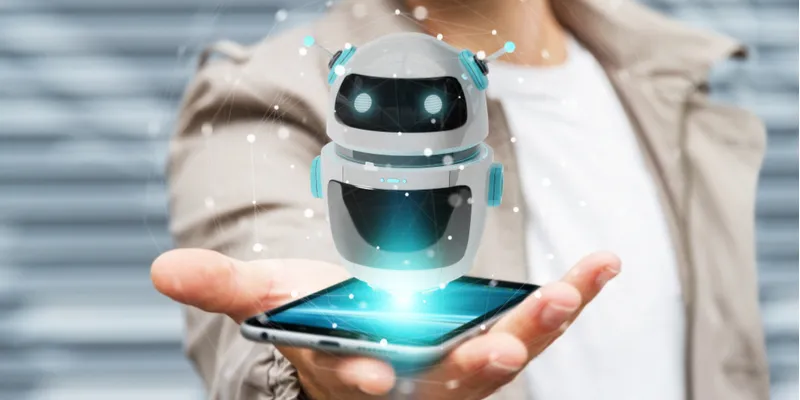Rise of chatbots: The future and the challenges ahead
Unlike websites, which are not very user-friendly, Chatbots are preferred by customers as they are programmed to ask for things in natural language. People can also ask questions and get answers from a chatbot, which is a dynamic solution that’s necessary to build customer trust.
Chatbots are on the rise, and people are using them with increasing frequency - from banking transactions and customer service inquiries to appointment scheduling and more. But, many wonder what’s in store for the technology and how dominant it’ll become in the societal landscape.

Many decades ago, people had no concept of websites because they didn’t exist yet. Instead of going online, people met with service providers in person, went to libraries for research and shopped solely in physical stores. Although these kind of interactions still happen, the internet has a strong hold on people’s lives today.
However, despite their proliferation, websites fall short of the promises many people expected them to fill.
But, is it possible for chatbots to become even more all-encompassing so that they completely replace websites one day?
Rob LoCascio, Founder and CEO of LivePerson, the company responsible for the chat window technology, had predicted in 2018 the first major brand would shut down its website, and after that others would fall like dominoes.
Chatbots to prevent confusion
Many people these days stop using a website due to issues such as too many ads and prohibitive registration requirements. LoCascio also asserts how Google’s rules have brought uniformity to websites, but have also made them confusing.
He mentions that up to 90 percent of calls taken by telephone-based agents originate from companies’ websites.
People often make those calls because they can’t find what they need on these websites, and have to take another approach to get the information. And companies are missing those customers because they are already too frustrated by the websites to initiate the necessary interactions on the phone.
But in case of chatbots, they let people ask for things in natural language. That approach may give them better results than typing a query into a search box or blindly looking around on a website.
Ordering food through chatbots
When people started ordering food using chatbots, they realised that it still makes mistakes when interpreting orders and may lack accuracy for a while. But the technology exists that allows people to order food with a chatbot and bypass a delivery website.
LoCascio says less than 15 percent of ecommerce transactions today happen through a website or an app. He believes that’s largely because websites aren’t user-friendly.
Brands such as Pizza Hut and Starbucks are letting people place orders by talking to their Alexa-enabled Amazon smart speakers in the US, and it may be soon followed in India as well.
The chatbots that take food orders benefit when people repeatedly place orders for their favorite cuisines. If individuals are familiar with what a restaurant offers on its menu — or can find out with the help of a chatbot — why would people still need to go to a website or use a delivery app before placing an order? Chatbots are apps too, but they could soon drastically disrupt the ecommerce sector more than ever.
Creating well-informed consumers
In his argument, LoCascio discusses how the ability to ask questions and get answers from a chatbot is a dynamic solution that’s necessary to build customer trust that goes along with buying more.
Without chatbots, people will have to search for and read the information themselves, and some may not feel up to doing that, especially if they’re working with small-screen devices.
Reports suggest that researchers are hoping to make upcoming chatbots able to build conversational rapport and be substantially more persuasive than some bots in the market now. If that happens, chatbots could simultaneously inform users and boost their buying confidence.
The downsides
Besides evaluating why LoCascio’s stance holds weight, it’s crucial to take a balanced approach and explore why chatbots might not be ideal.
People often talk about the lack of access to chatbots by the visually impaired people who use assistive technologies to go through websites.
For example, an experiment with Apple’s VoiceOver feature showed it did not recognise many elements in a chatbot window, including clickable buttons and images.
Moreover, compared to human customer service agents, chatbots have some limitations that mostly relate to programming.
Chatbots can only answer the questions if programmers equip them with the answers. If a person has a very specific question or needs an answer based on experiences over time - such as “How many of your customers return this phone because it has battery-life issues?” - the chatbot will probably draw a blank.
However, some developers are compensating for this known issue now. They’re aiming to make chatbots that get smarter over time without consistent input from programmers.
Positive change
LoCascio concludes that the replacement of websites with what he calls “conversational commerce” will be devastating for Google, but will have an overall positive effect on how ecommerce companies conduct business and interact with customers.
Due to the relatively early nature of his prediction about the first major brand’s website ceasing to exist this year, people don’t have to wait long to see if his beliefs come to pass.
(Disclaimer: The views and opinions expressed in this article are those of the author and do not necessarily reflect the views of YourStory.)







